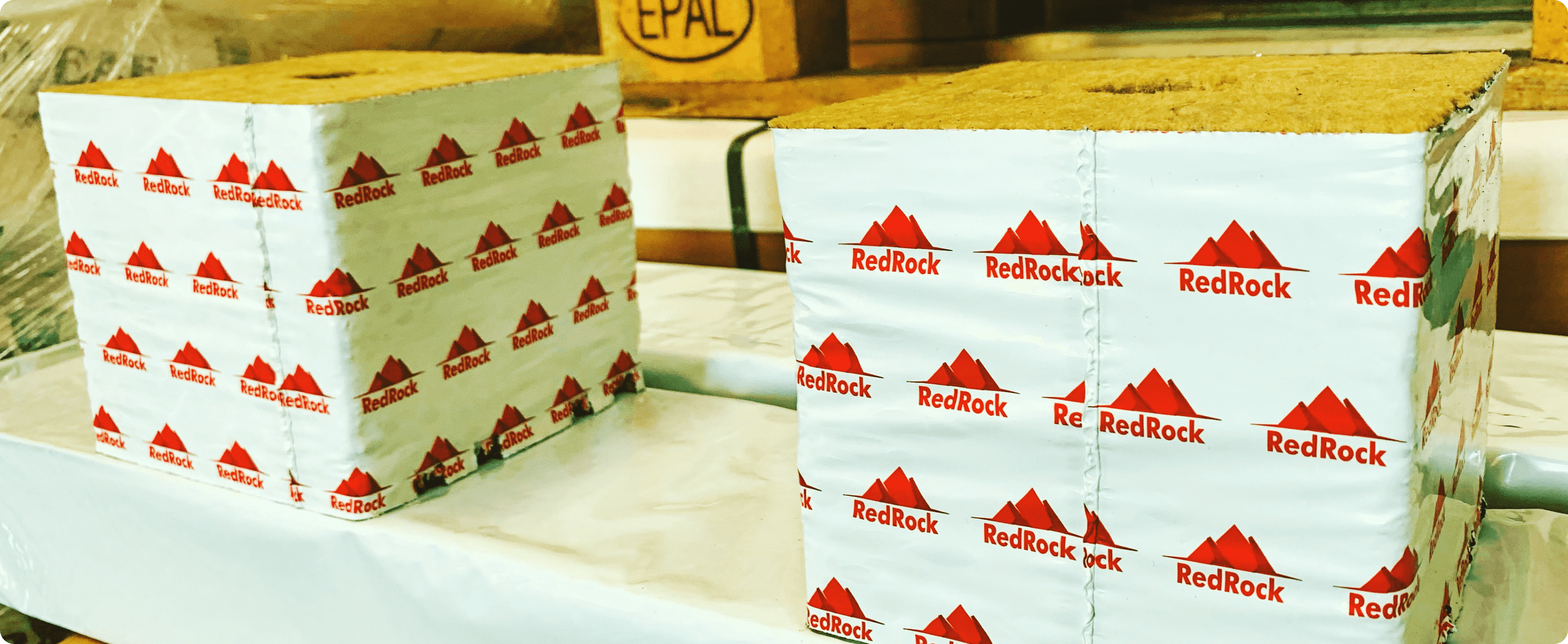Time to Rock and Wool: Hydroponic Systems and Stone Wool Applications

The commercial horticulture industry is always striving for more efficient practices that are not only easy to use, but also easy on the wallet.
In the hydroponics spectrum, one such material that checks all those points is rockwool also known as stone wool or mineral wool.
Stone wool has a broad range of uses and applications in the commercial greenhouse operation depending on the style and set up of the growing area.
What is Stonewool?
Before discussing the uses of this material, it is important to understand where it comes from and how it is made.
Knowing this information will help in the proper use and understanding of the material and its properties. Rockwool is a thinly spun ‘wool’ material that was first discovered in Hawaii in the 1850’s. It wasn’t used as a true material until the 1930’s for construction and insulation purposes.
To use this basalt rock material, it must be melted and them spun into thin fibers and shaped into various forms depending on the final product goals. It wasn’t until the late 1960’s and early 1970’s that research began into the use of stone wool as a horticulture growing medium.
Over the years, rockwool has now been accepted as a growing medium due to its ability to provide a sterile and stable growing environment, as well as its ability to retain water while maintaining adequate oxygen at the root zone. .
Hydroponic Setups and Rockwool

In the realm of hydroponics, there are six main types and setups. Each have their open properties and benefits based on the desired goals and crops to be grown in the operation.
These types are Wick, water culture, ebb and flow, drip, nutrient film technique (N.F.T), and aeroponics. There are countless variations of these types, however, all setups are variations or combinations of these main types.
The main reason for stone wool to be used in a hydroponic system is to provide an area of buffer for nutrients in the root zone of the crops being grown all while maintaining desired oxygen levels for the plant to succeed. In some hydroponic systems, the flow of plant nutrients must be constant to prevent drying and the death of the plant, while other systems run in intervals to prevent the drowning of plant roots due to lack of oxygen.
With the use of a substrate system, the substrate maintains a reservoir of nutrients in the root zone along with a percentage of air space. This reservoir is available for use by the plant at all times even in between irrigation times. With stonewool as a substrate in a hydroponic system, the grower has the ability to change conditions at the root zone within 12-24 hours.
Uses of Stonewool: Application Materials

Based on the system type and overall desired use of the stonewool material, there are countless shapes, types, and products that can be used in any greenhouse operation. Whether the applications are in propagation, vegetable production, or floriculture production, stonewool has its place as a growing medium. From plugs, blocks, and slabs, all products can be custom cut and tailored to the specific crop being grown. With the different sizes, there are specific stages of growth that the cubes and materials are best suited. In propagation and germination of seeds, the smallest cubes that are not wrapped in plastic are normally the ones used for seed starting. The next size up is used primarily for cuttings as the plastic wrapping allows for the slow evaporation of water. The larger block cubes are used as a primary growing medium.
For smaller plants this may be the only medium needed to grow the crop, while larger plants require larger cubes to be transplanted into. In addition to the grow cubes/ blocks, stonewool comes in slab form for crops that require larger growing areas than a confined cube. Slabs come in 6-12” widths and are all 3” deep and 36” long. The 6” and 8” widths are the most common and popular amongst commercial operations as they are large enough to grow just about any crop. All slabs are wrapped and sealed in a plastic covering. The most common practice is to start plants in cubes and transplant the seedlings to the slabs once roots and plants are more established. The ease of transplanting to a slab is as easy as cutting an X the same size as the cube and setting the cube on top of the slab. A temporary pinning may be required to help with stability until roots grow into the slab.
In addition to the cubes and slabs, stonewool can be found in loose form. There are three different types of loose stone wool- absorbent, repellent, and Hortiwool. Using loose or granular stone wool allows a grower to fill pots and other on hand containers with the medium so that the sizes and areas to grow in are not confined to specific shapes and sizes. Additionally, loose stone wool can allow the commercial grower to fine tune the water amounts for a particular plant. Extra care should be taken in using loose stone wool due to the nature of the material. This includes PPE that can be easily obtained- glasses, gloves, and a face mask.
The use of stone wool or stone wool in any size or scale operation can be one of great benefits. A commercial operator needs to assess the goals and overall wants of the business to weigh both the pros and cons of making a switch to stone wool in a hydroponic system. For any questions and helpful tips be sure to reach out to a member of the RedRock Block We’re here to help make those important decisions!
Give Redrock Block a call today to request more information about our premium commercial-grade stonewool grow blocks and cubes, stonewool slabs, flowering slabs, and stonewool plugs offered in bulk and at wholesale pricing! Call- 1-310-967-2025



